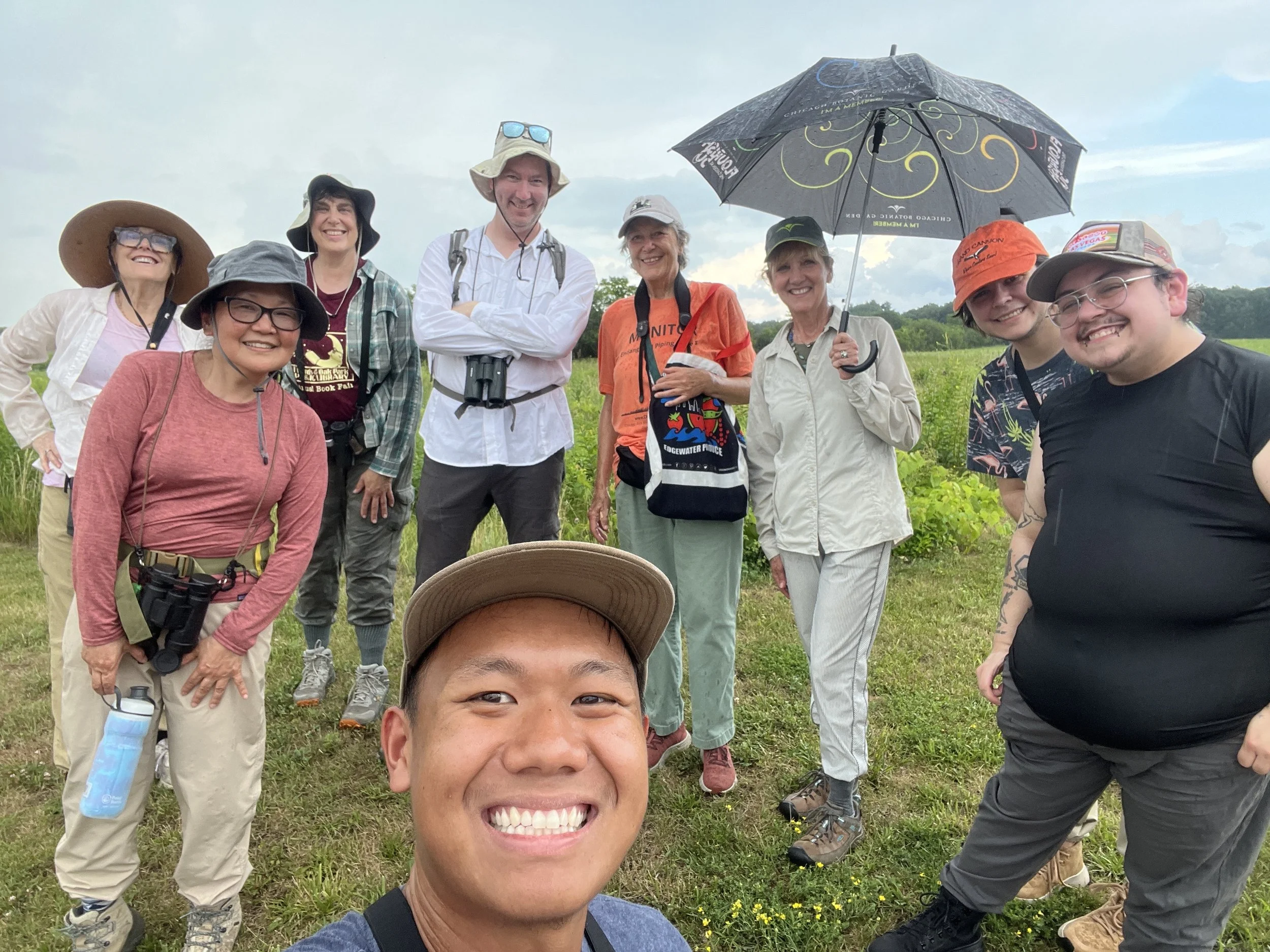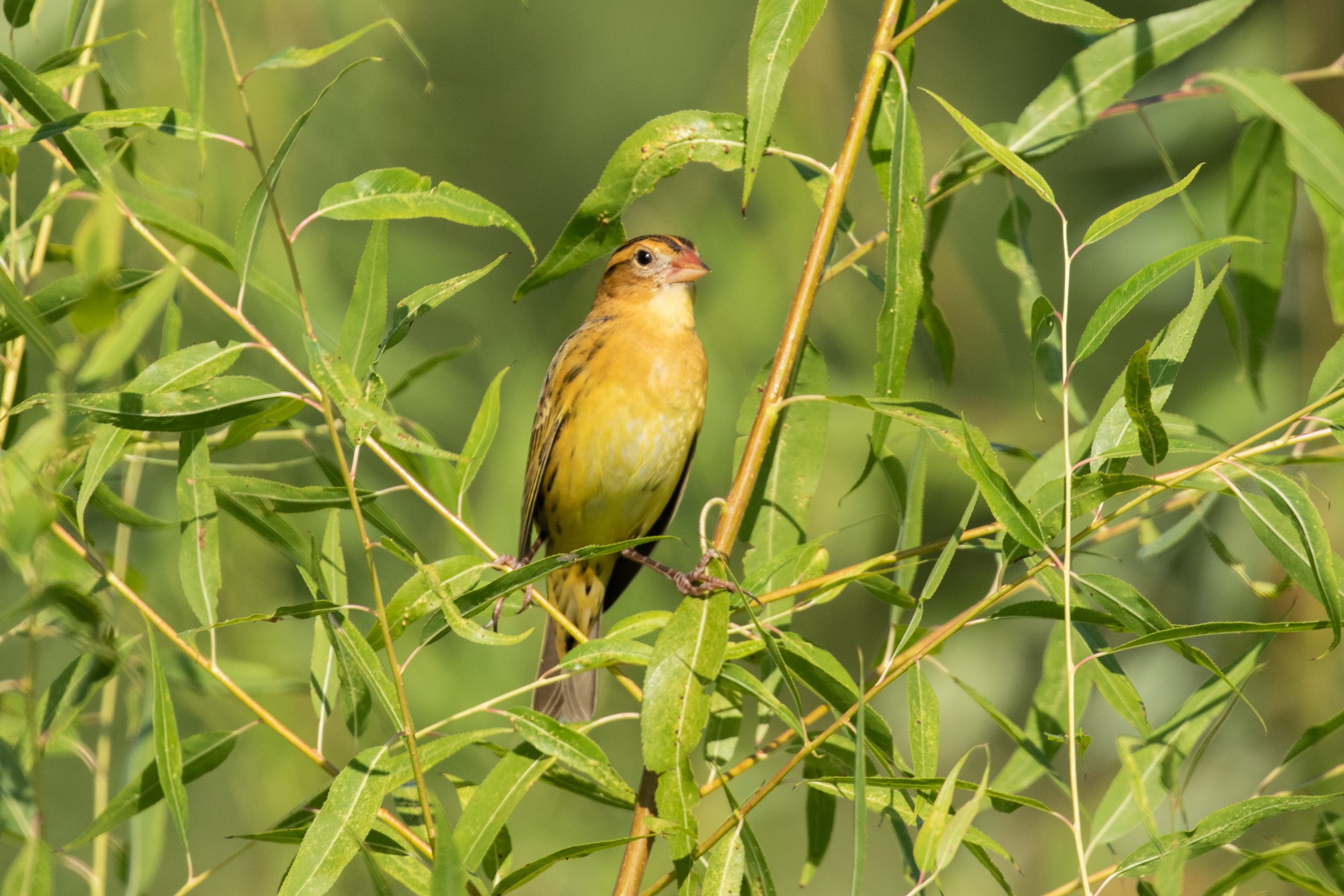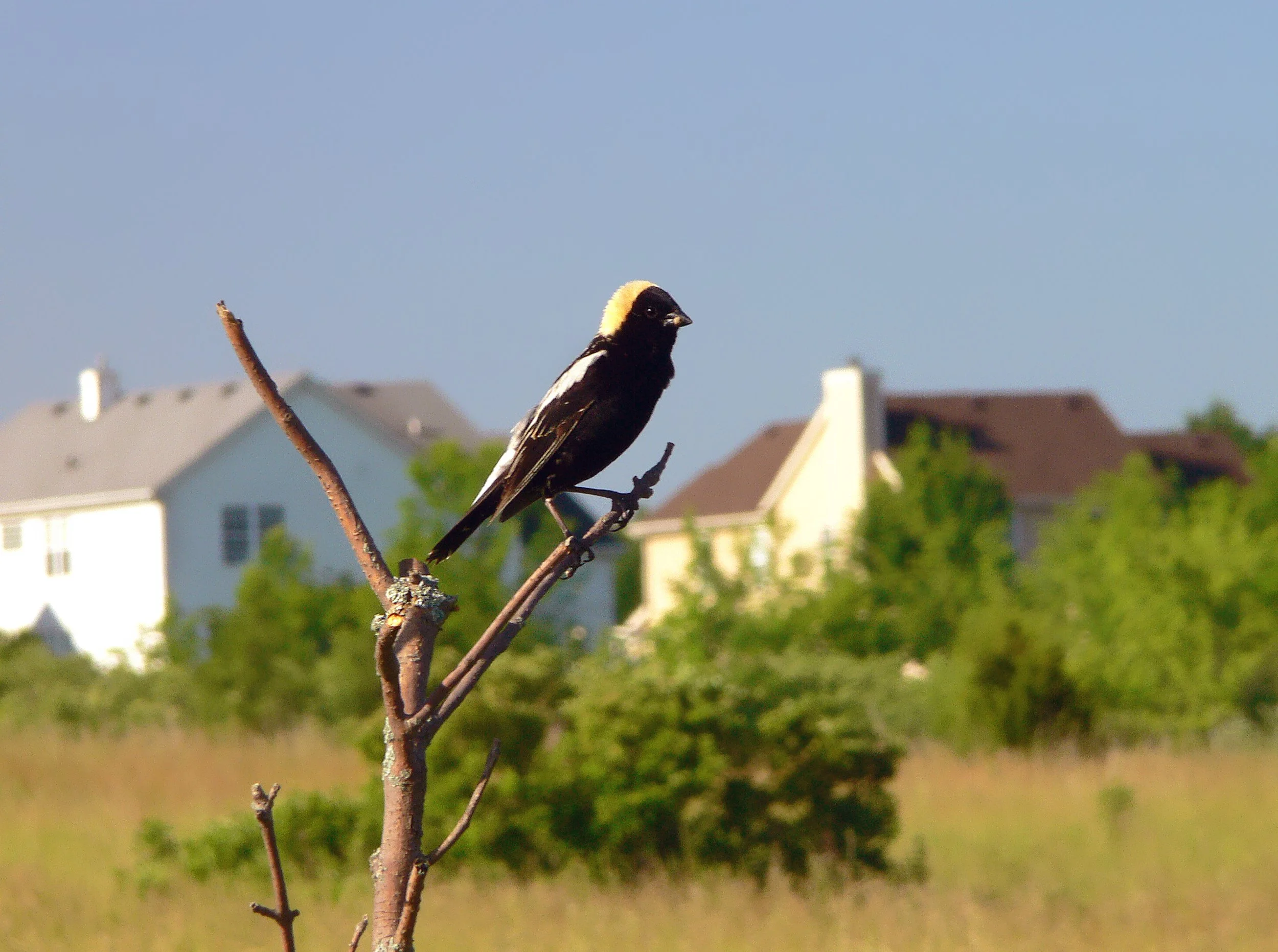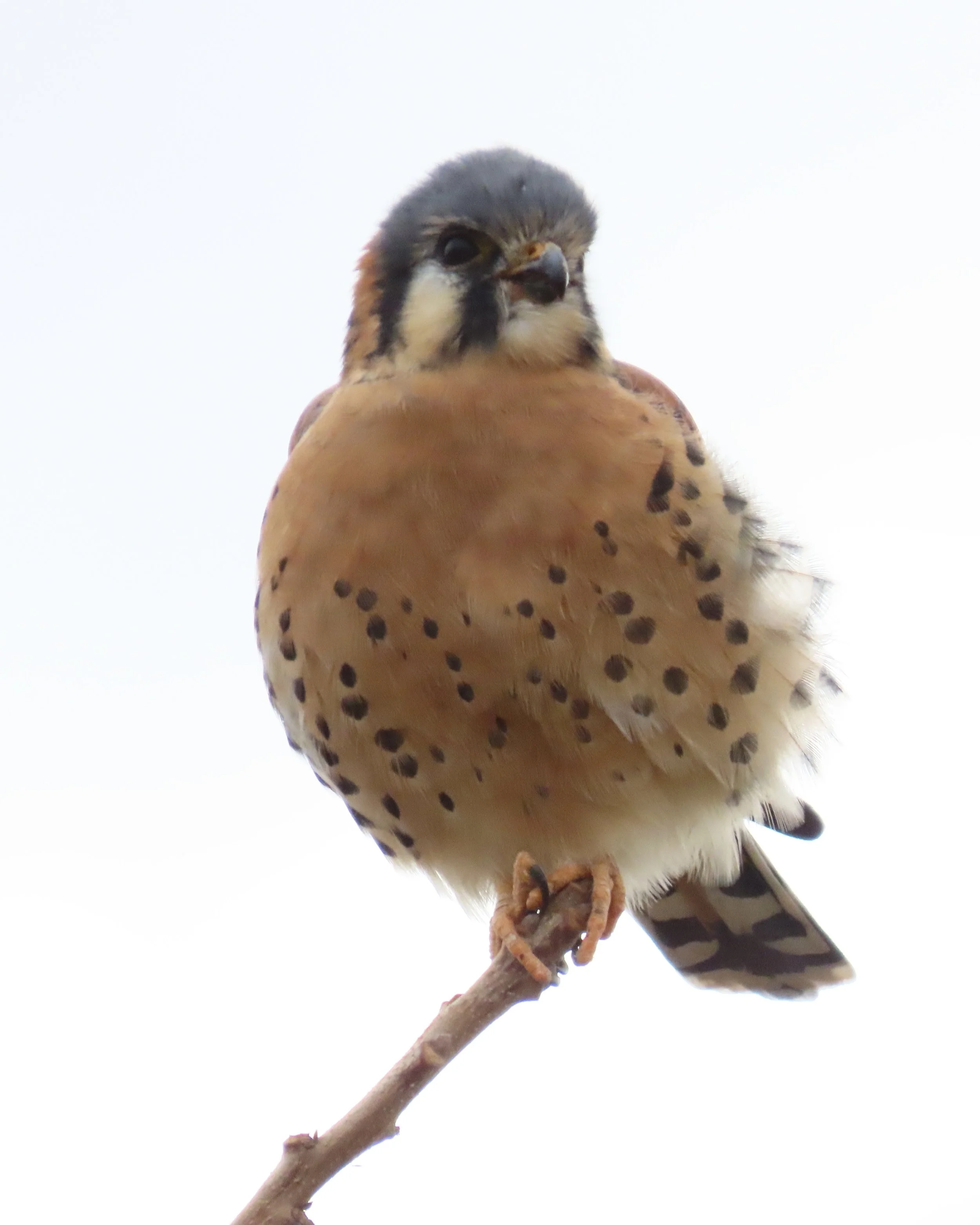Field Trip Recap: Horizon Farm
words by Joann Umeki
Despite the 90 degree heat, high humidity, and ominous weather forecast, eight birders joined Sammy Cabindol on the afternoon of July 11 to search for grassland birds at Horizon Farm in Barrington Hills, Illinois.
Many of the group had high hopes of seeing a Bobolink, as an astounding 68 individuals were sighted on Sammy’s previous COS Horizon Farm walk in June. Formerly a thoroughbred horse farm and boarding facility, this property covers more than 400 acres, and features meadows, wetlands, and stream habitats. Acquired in 2014, it is one of the latest and largest acquisitions of the Forest Preserve District of Cook County.
From the parking lot, birders were greeted by the song of an Eastern Meadowlark, and a Great Egret perched in a tree at the edge of the wetland. We proceeded north on the gravel path toward the water, where Song Sparrows and a Common Yellowthroat chattered. A lone Sandhill Crane was spotted wading in the pond. A Killdeer screeched and flew from the opposite bank. Further up the path, an American Kestrel perched on a nesting box across a meadow.
Sandhill Crane. Photo by Em De Blas, Wolf Road Prairie, March 30, 2024.
The group then headed back to the main trail loop, where excitement built at the sound of a Bobolink. A male and female Boblink were soon sighted in the tall grass and were “lifers” for many in the group. The side by side view of contrasting male and female plumage was delightful to see.
Female Bobolink. Photo by Fran Morel, Montrose Bird Sanctuary, Aug. 28, 2021.
Like many birds, the Bobolink’s name originates from its song, which is often described as bubbling and tinkling. “Bobolink” is thought to be a shortened form of “Robert of Lincoln” or “Bob o’ Lincoln,” but it is a challenge to hear anything that sounds close to that mnemonic in the birdsong. William Cullen Bryant’s poem, “Robert of Lincoln,” is a wonderful depiction of the life cycle of a Bobolink, and the poem may have increased usage of the bird’s common name.
Male Bobolink.
As more clouds moved in and the skies clouded over, the group moved rather quickly (for a bird walk) down the mile-long path. Savannah Sparrows buzzed and sang in the pasture while dragonflies and butterflies flitted by.
Although no caterpillars were detected on the nearby milkweed, multiple pairs of mating Monarchs were observed. Great Mullein plants, with their tall spikes of yellow flowers and furry leaves, were also abundant along the path. It was pointed out that the spike could be used as a torch when made into a candle. One always leaves a COS walk with at least a few fun facts.
American Kestrel. Photo by Steve Pearson, Bobolink Meadow, Nov. 21, 2023
A Northern Flicker and Cedar Waxwing were noticed in distant trees, and fly-overs were made by two Red-Tailed Hawks and a Double-crested Cormorant before lightning flashed and raindrops started to fall.
Not wanting any casualties, Sammy directed the group back to the meeting point, where we paused for the obligatory group selfie and tick check. A total of 27 species were observed.





